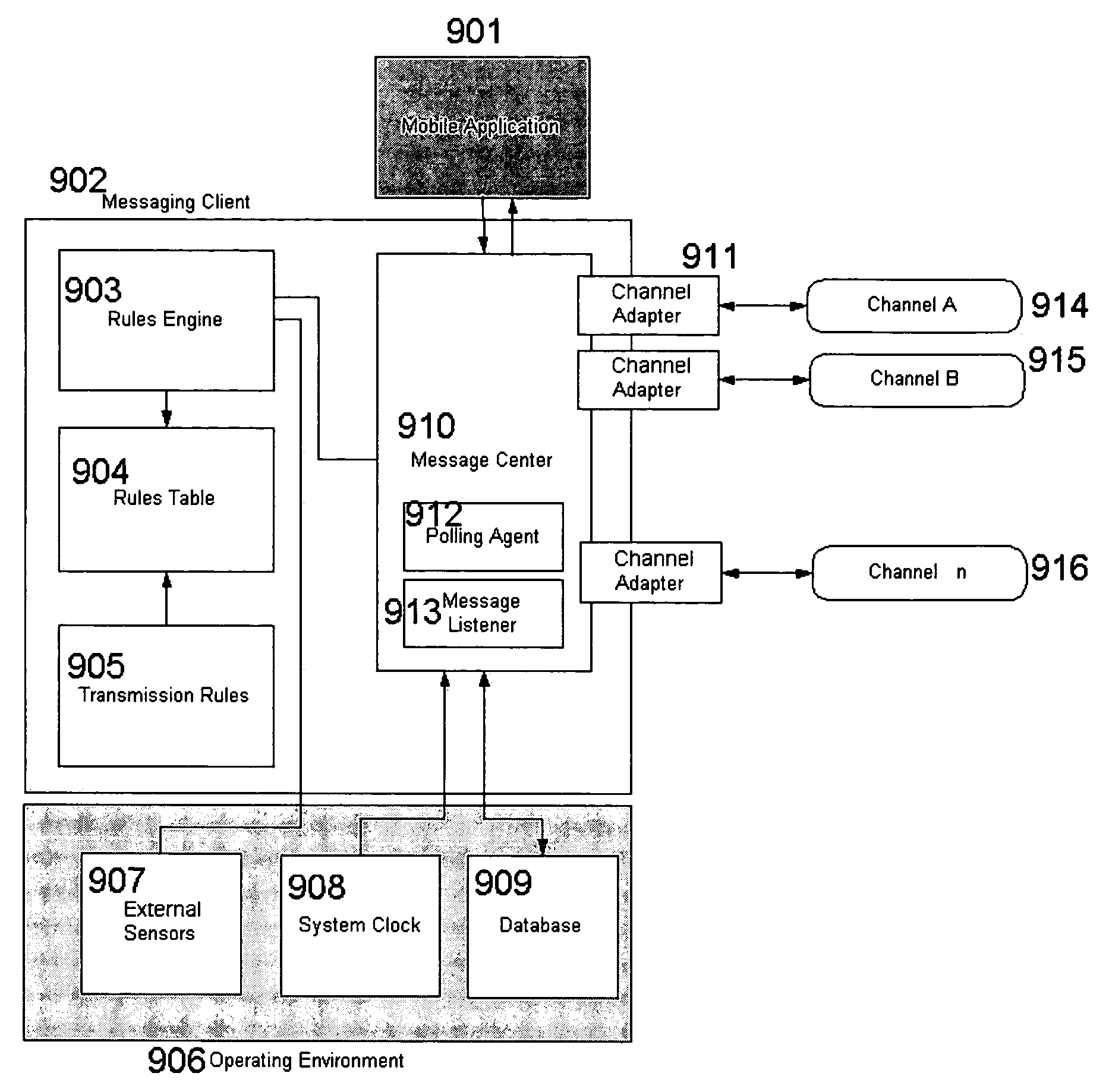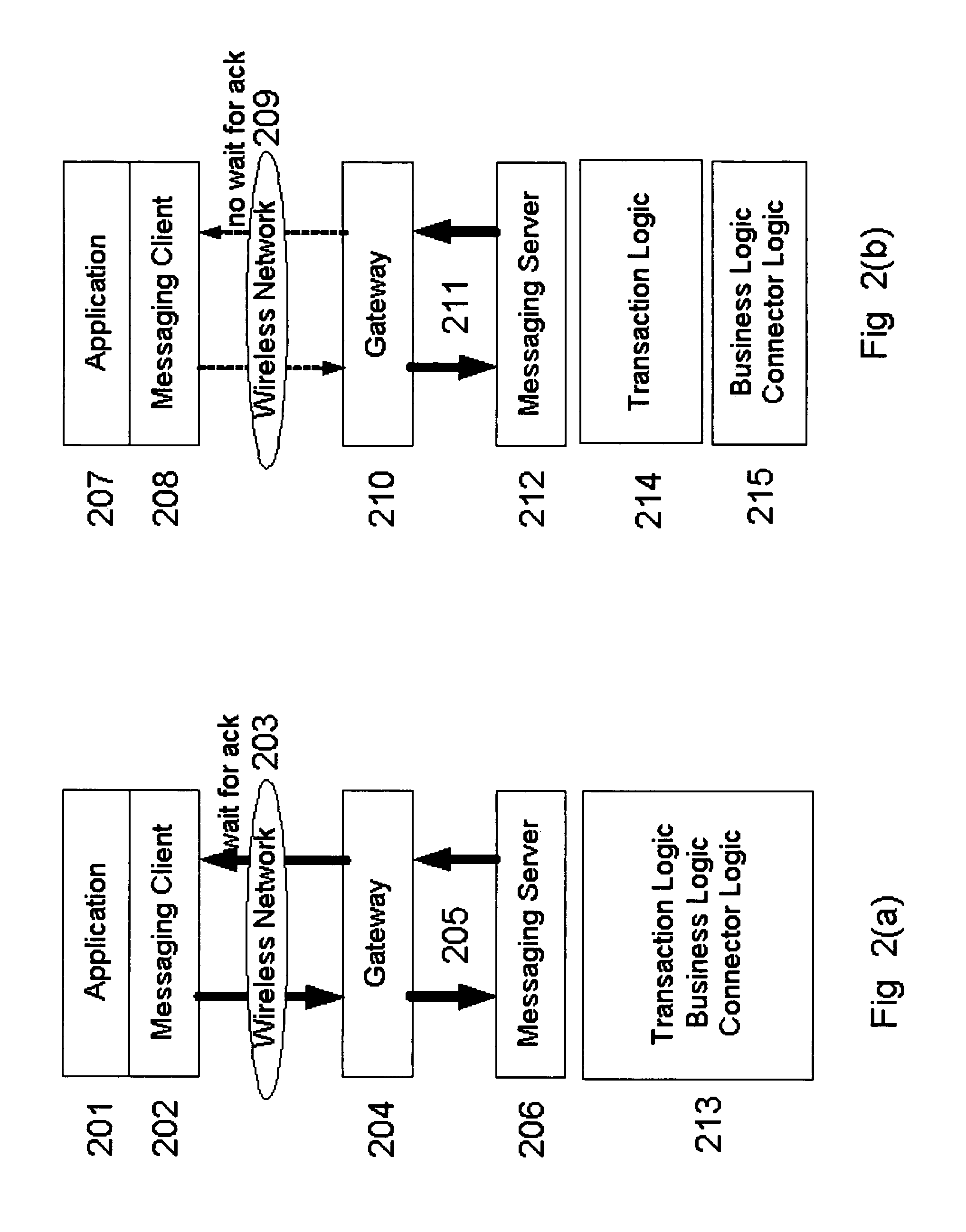Efficient transactional messaging between loosely coupled client and server over multiple intermittent networks with policy based routing
a transactional messaging and loosely coupled technology, applied in the field of clientserver computing over multiple intermittent networks, can solve problems such as inability to achieve, and achieve the effects of reducing bandwidth, increasing the chances of getting messages, and simplifying the typical separate development and deployment process
- Summary
- Abstract
- Description
- Claims
- Application Information
AI Technical Summary
Benefits of technology
Problems solved by technology
Method used
Image
Examples
examples
[0243]
RULEACTIONm.size > 500003:C = S,XIf message size is > 50 KbytesSend using serial channel,compressed(t > 0700) * (t = 62:C = WIf current time is between 7 am and 6 pm,Send using wireless WANand message priority >= 6channel or cheaper
[0244]Aging is defined as the process by which a message's priority is increased over time such that it is not stuck in the queue for too long.
Aging rules:
[0245]Do not set aging[0246]Increase the priority of a message by 1 every:[0247]XX minutes (set by administrator), or[0248]XX sends (set by administrator)[0249]Maximum priority (default: 9)[0250]Do not apply aging when:[0251]File size is >XX (set by administrator)
[0252]The Transmission Rules are sent to the target User and Device 801 by placing a system message with the rule in the Messaging Server 812. When the Messaging Client 803 picks up the system message, it automatically, without manual user intervention, updates its Transmission Rules 804. This enables the Administrator to update the Rules...
PUM
 Login to View More
Login to View More Abstract
Description
Claims
Application Information
 Login to View More
Login to View More - R&D
- Intellectual Property
- Life Sciences
- Materials
- Tech Scout
- Unparalleled Data Quality
- Higher Quality Content
- 60% Fewer Hallucinations
Browse by: Latest US Patents, China's latest patents, Technical Efficacy Thesaurus, Application Domain, Technology Topic, Popular Technical Reports.
© 2025 PatSnap. All rights reserved.Legal|Privacy policy|Modern Slavery Act Transparency Statement|Sitemap|About US| Contact US: help@patsnap.com



